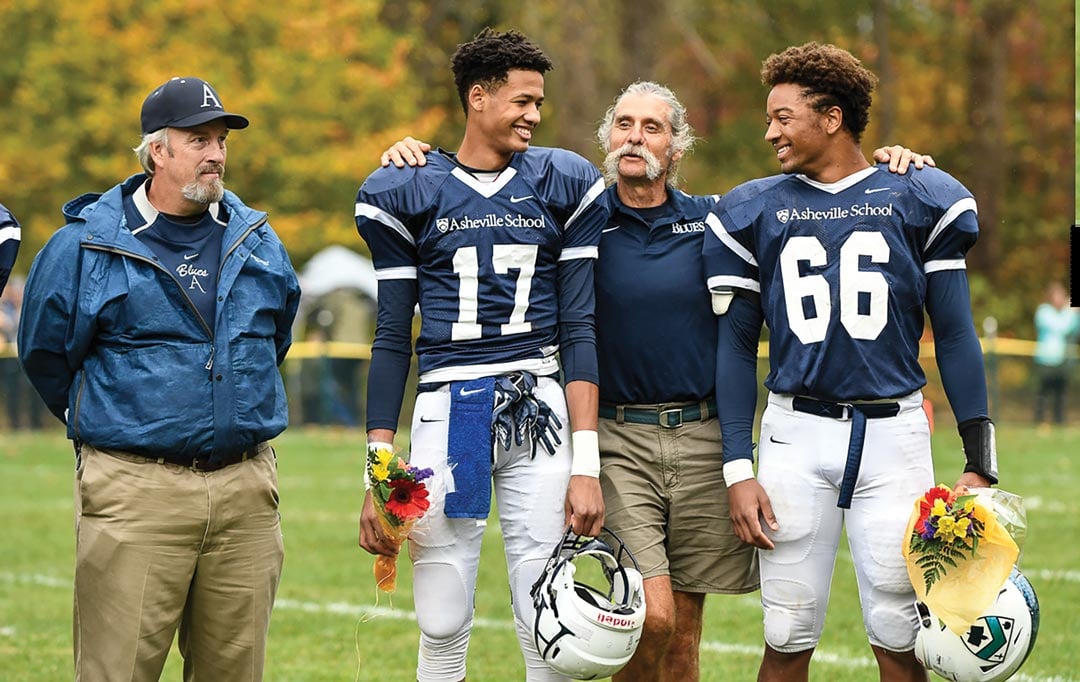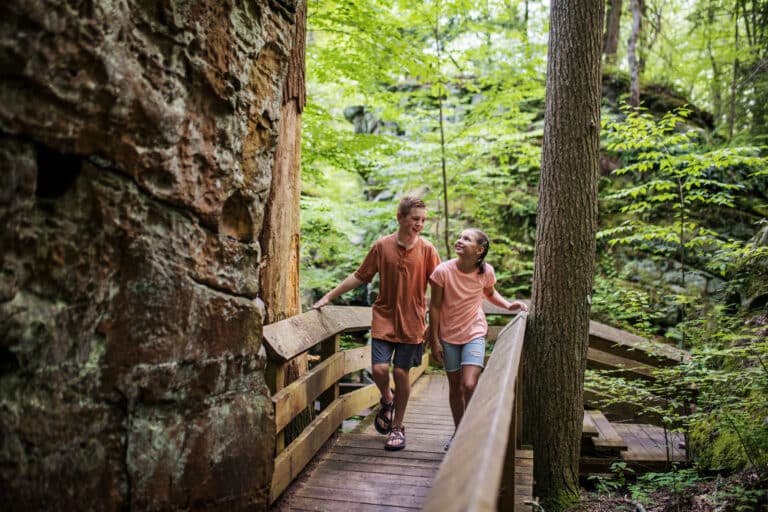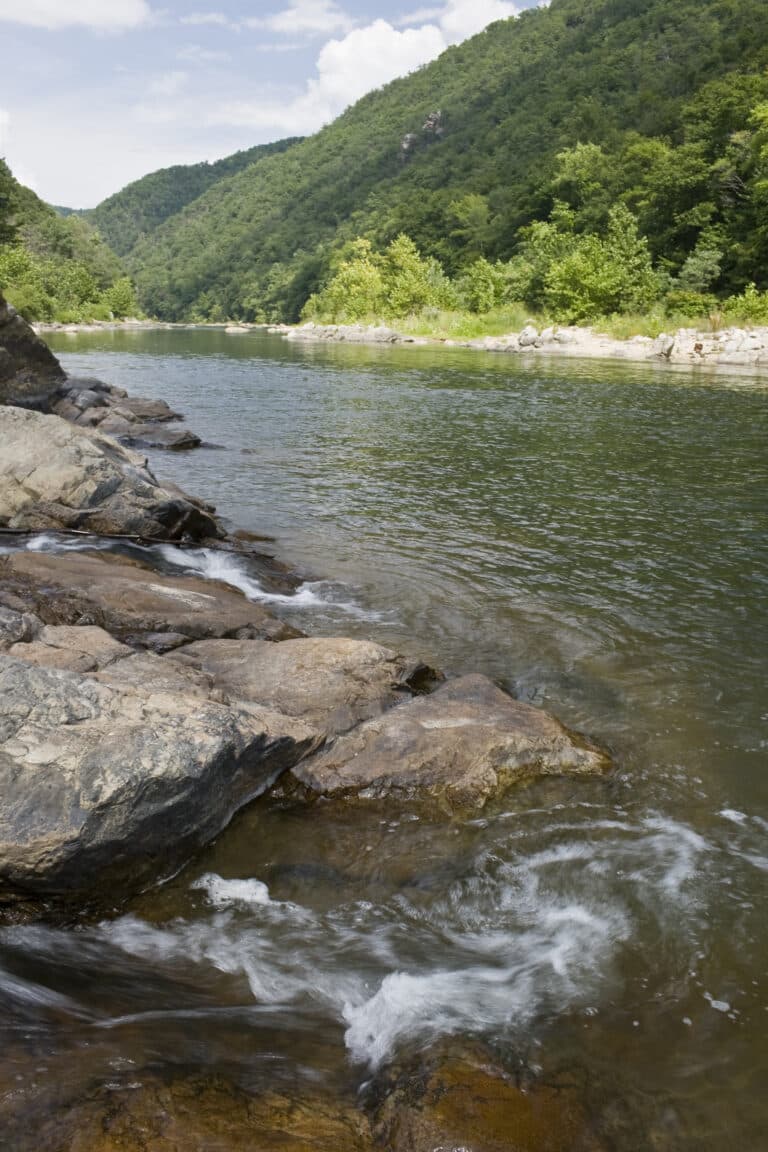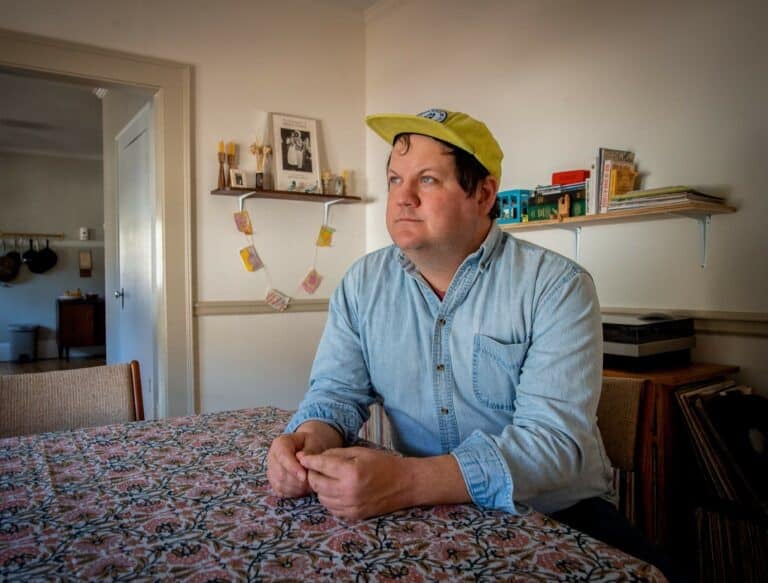Catch up with three of the Blue Ridge’s best athletes from yesteryear.
For more than two decades, Blue Ridge Outdoors has been covering the top athletes and outdoor trends in the Mid-Atlantic and Southeast. As 2018 winds down, we catch up with some of these personalities to see what they have been up to the last few years.
Lecky Haller
After a canoeing career spanning more than two decades and 400 races, Lecky Haller does not seem to be slowing down. Now in his ninth year as a coach at the Asheville School, a boarding school in Western North Carolina, Haller does a little bit of everything.
He is the outdoor facilities director for athletics, head coach for the wrestling and lacrosse teams, and in charge of the ski program. In the fall, he runs a mountaineering program, taking students paddling, biking, and climbing in the area. “I wear a lot of different hats,” Haller said.
He still finds time to race in one or two triathlons a year to feed his competitive side.
“Fortunately, I can still run around and don’t get too many injuries,” Haller said. “It’s not as high of a level but I think that whatever you do, you got to do on your own level anyway. I had my time as an elite athlete and I had great results.”
Haller’s storied career on the water began at eight years old when he learned to paddle at Camp Mondamin near Flat Rock, N.C. Always a gifted athlete, he played lacrosse through college before his focus turned to canoeing.
During his time as an elite athlete, Haller medaled in four World Championships, 15 National Championships, and attended two Summer Olympics.
“Sometimes I won, sometimes I got on the podium, and sometimes I blew it and came in last,” he said. “I got to race in East Germany when East Germany was still East Germany. I got to go to the Eastern Bloc, race there, and then I got to see it change. I’ve seen history.”
After the Sydney Olympics in 2000, Haller retired from the sport and worked as a trim carpenter for ten years. With the Asheville School, he lives on campus with the students. Although there are times when he misses the competition, he now channels that energy into helping younger athletes reach their potential.
“I sometimes dream that I could still be as good as I once was,” Haller said. “In my dreams, I am. But I get just as much joy out of seeing other people do well as I got from the satisfaction myself.”
Throwback:
In 1996, Haller was ranked number one in the world with his brother Fritz for men’s C2, a two-man canoe event in whitewater.
At the time, BRO was still a quarterly insert in C-ville Weekly. The magazine’s motto was, “Spend your money on sports—we’re free.” 23 years later, BRO is now an independent monthly publication, although the magazine is still free for its readers.
In BRO’s coverage of Haller’s Olympic competition, Haller reflected back on learning to paddle at Camp Mondamin. The camp has produced a number of well known boaters, including John Burton, who competed in the 1972 Olympics, the first time the canoe slalom event appeared at the games. The following year, Burton returned to Camp Mondamin where a young Haller was a camper.
“He came to show movies of the 1972 Olympics in Munich,” Haller said. “The guy was basically a god to me as a little kid.”
In 1992, Haller made the U.S. Olympic Team, something he had wanted to do ever since meeting Burton at camp. Looking back on that experience, Haller says he still remembers “walking in with the Dream Team, knowing that Michael Jordan is on my team.”
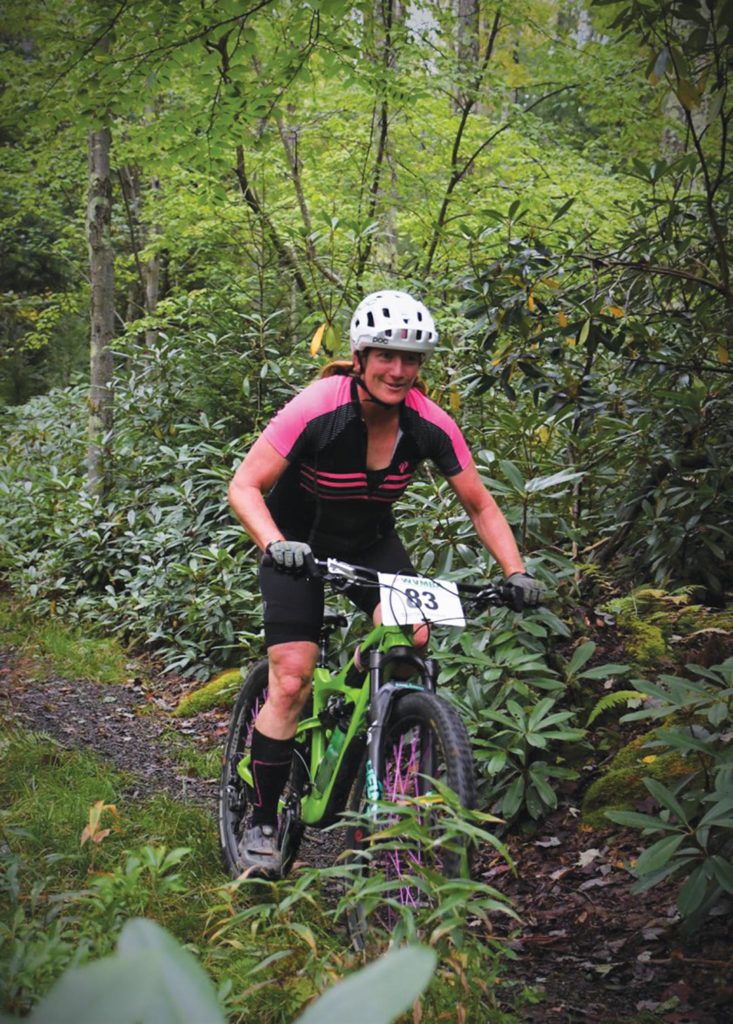
Sue Haywood
Sue Haywood has been tearing up the trails longer than BRO has been a monthly magazine. In the more than two decades she has been racing, Haywood has watched the mountain biking community grow and evolve.
“More people are into it, and more people have access to it,” Haywood said. “You don’t have to come all the way out to the mountains of West Virginia to do the sport now.”
Then there is the gear.
“The bikes are so much more awesome now,” Haywood said. “They’ve totally changed the sport for the better.”
Haywood’s dominance on the trails is apparent in issues of BRO throughout the late 1990s and 2000s. In a profile for the September 2000 issue, Andy Morris wrote, “Among elite women, Haywood may have signaled her arrival.”
Indeed she had. Haywood has since racked up four National Championships and a 24-hour solo racing World Championship. From 1999 to 2013, she won the Shenandoah 100 seven times.
Haywood has since retired from the professional World Cup circuit but she’s still racing, focusing on the mental aspect of the sport.
In June 2017, Haywood became the first woman to complete the Massanutten Ring, a 68-mile loop of hard trails around Fort Valley, Va. She is one of seven riders to have completed a full pull in a single go, adding her name to the Fellowship of The Ring. Haywood finished all 68 miles in 20 hours and 30 minutes and is the only rider to have completed the full pull in reverse.
In July of this year, Haywood won the Enduro National Championship in Snowshoe, W. Va. for her age group.
When she’s not competing against other riders or her own mental toughness, Haywood offers private lessons and clinics in the region. She also runs the Canaan Mountain Bike Festival, which she started ten years ago.
“I always enjoyed helping other women out,” Haywood said. “It’s a mountain sport, it’s a tough sport, and you take a lot of licks… It’s one of those hero to zero sports where you’re doing great and then all of a sudden you might crash or get a flat tire. I just want to encourage women who have an interest in mountain biking and help them figure out the skills they need.”
Throwback:
In that same September 2000 issue, Allison Tillack wrote about gear “For those who squat instead of stand…” She highlighted a surge in products on the market designed specifically for women, like Osprey’s Amelia backpack and Sidi’s Toscana 2 cycling shoes.
“Let’s face it: Women’s bodies are different from men’s and that means our boyfriend’s long johns and our brother’s old hiking boots just aren’t going to cut it,” Tillack wrote. “Manufacturers have responded to this universal truth with gear created specifically for women (not just scaled down versions of the men’s models).”
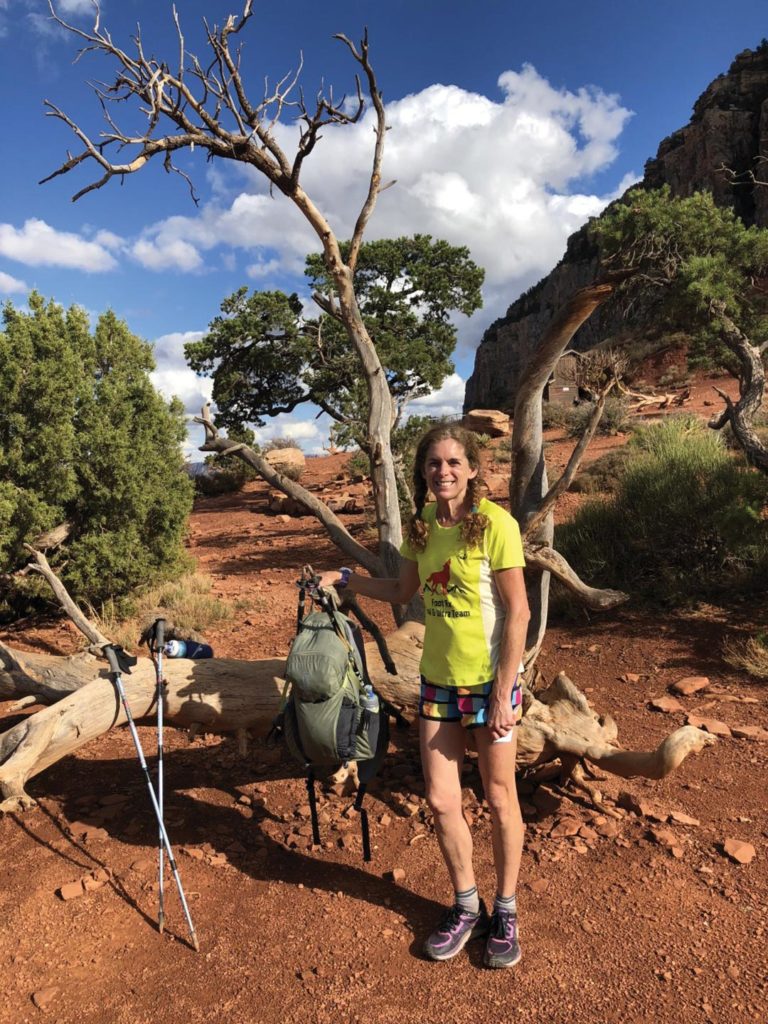
Anne Riddle
Although a second back surgery in 2013 ended her competitive career, Anne Riddle still finds ways to challenge herself. In October, she completed a Rim-to-Rim-to-Rim run at the Grand Canyon (running from the south rim to north rim and back).
“That wasn’t about time or anything like that,” she said. “It wasn’t a race. It was kind of just going out and testing myself.”
Riddle and a friend completed the 48-mile trek in 19 hours, crossing over a variety of terrain and more than 11,000 feet of elevation change.
“The scenery alone was breathtaking,” Riddle said. “Even though I had done a couple of ultras here and there, I hadn’t done anything real long in a while… you just really lose track of everything when you’re out there for 19 hours.”
She recently rediscovered rock climbing, a sport she said challenges her and offers room for growth.
“I’m channeling not the competitive part, but the part of me that likes to compete with myself,” Riddle said.
That desire to push her limits is what got Riddle into ultra running all those years ago.
“Right after I did my first marathon, I was having some knee pain and a local orthopedist told me that I just wasn’t cut out for running, I should quit running and ride bikes instead,” she said. “And thank goodness I didn’t listen to him because I wouldn’t have had all of these amazing experiences. I’m not saying you can overcome everything, but I’m saying don’t give up too quickly without really looking at every angle and pushing as hard as is realistic.”
Riddle won nine National Championships in road and trail running and set countless speed and distance records along the way, including the women’s speed record for South Beyond 6,000. Her second place finish in the International Association of Ultrarunners stands out as one of her top accomplishments.
In an August 2005 article, BRO reported, “June 26, 2005 will long be remembered in the Blue Ridge as the best day [in] women’s running history. Anne Riddle Lundblad of Swannanoa, N.C., finished second in the IAU World Cup 100K Road Race in Hokkaido, Japan. She kicked at the end to finish in a personal-best 7:54:22, just 40 seconds behind the winner. Riddle’s performance led the U.S. to a team gold medal.”
Riddle still runs an average of 50 miles a week, about half the distance she used to run when she was competing.
“I probably could continue with the real long stuff but I might be sacrificing the ability to run shorter stuff for the rest of my life,” she said. “It was worth it to me to slow down on the competitive stuff and enjoy it more.”
Throwback:
In 2005, Blue Ridge Outdoors Magazine’s annual “Best of the Blue Ridge Awards” were still submitted on a paper ballot. Readers ripped out the last page of the magazine, filled out their favorites in each category, and mailed in their votes. BRO tallied each vote by hand. Fast forward to 2018, the nomination process and competition is all done online. Winners for 2019 will be featured in the next issue.
